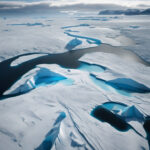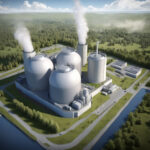US Supercomputer Simulates 1 Quintillion Calculations to Design Better Airplanes
U.S. Department of Energy’s (DOE) Argonne National Laboratory is helping researchers explore novel ways to design next-generation airplanes through the utilization of a cutting-edge supercomputer. This supercomputer, capable of performing a staggering 1 quintillion calculations per second, is revolutionizing the aerospace industry by enabling in-depth simulations that were previously unattainable.
The design and development of airplanes have always been a complex and time-consuming process, requiring meticulous attention to detail and extensive testing to ensure safety and performance. With the help of advanced supercomputing technologies, researchers can now simulate various scenarios and conditions with unprecedented accuracy, leading to the creation of safer, more efficient aircraft.
One of the key advantages of using supercomputers in aircraft design is the ability to analyze a vast amount of data in a relatively short period. By inputting different parameters such as aerodynamics, materials, and environmental factors into the simulation, researchers can quickly evaluate numerous design options and identify the most optimal solutions.
Moreover, the high-fidelity simulations enabled by supercomputers allow engineers to predict the behavior of an aircraft under different circumstances, such as extreme weather conditions or emergency situations. This capability is invaluable for enhancing the safety and reliability of airplanes, ultimately benefiting both passengers and industry professionals.
In addition to safety improvements, supercomputers are also driving innovation in aircraft performance and fuel efficiency. By fine-tuning the design of components such as wings, engines, and fuselage using simulation data, engineers can develop airplanes that consume less fuel, produce fewer emissions, and operate more smoothly.
Furthermore, the use of supercomputers in aircraft design is paving the way for the development of revolutionary concepts, such as supersonic travel and electric propulsion. These groundbreaking ideas, once deemed unfeasible, are now within reach thanks to the computational power and capabilities of modern supercomputing systems.
As the aerospace industry continues to evolve, the integration of supercomputers into the design process will play a crucial role in shaping the future of aviation. By leveraging the vast computational resources available at facilities like the Argonne National Laboratory, researchers can push the boundaries of innovation and create aircraft that are safer, more efficient, and environmentally friendly.
In conclusion, the use of supercomputers to simulate 1 quintillion calculations for designing airplanes represents a significant milestone in the aerospace industry. With the ability to analyze complex aerodynamic patterns, structural dynamics, and performance metrics, researchers are ushering in a new era of aviation innovation that promises to revolutionize the way we travel. By harnessing the power of supercomputing technology, the possibilities for designing better airplanes are virtually limitless.
supercomputer, simulations, aircraft design, aerospace industry, innovation












